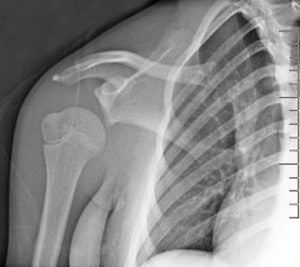Dislocated Shoulder
(Shoulder Instability)
About shoulder dislocation and instability
The shoulder is the most mobile joints in the human body. It can make a wide range of motions and turns in any direction.
In a dislocated shoulder the head of the humerus (the upper arm bone) is partially (shoulder subluxation) or completely out of the socket (part of the shoulder blade bone)
Because the shoulder can move in several directions, it can dislocated forward (anterior shoulder dislocation), backward (posterior shoulder dislocation) or downward.
Once a shoulder has dislocated in may become unstable and it is susceptible to repeat episodes.
What happens when you dislocate your shoulder?
Dislocated shoulder symptoms may include:
- pain in the shoulder and upper arm
- a clearly out of place shoulder (deformity in the front or back of the shoulder)
- difficulty in moving the upper arm
- swelling
- sensation of the shoulder feeling loose
Shoulder dislocation causes
It takes a strong force to put the head of the humerus out of place.
The main causes may be:
Sport injuries
Contact sports such as football, hockey or sports that may imply falls, such as volleyball, skiing, gymnastic.
Injuries or Trauma (not related to sports) such as car crash of accidental falls
Muscle and tendons problems
Some people have looser ligaments in their shoulders and this condition is just normal for their anatomy.
How do you know if your shoulder is dislocated?

The diagnosis must be confirmed during a doctor examination. The orthopedic surgeon will inspect the shoulder and test looseness of its ligaments.
In most cases the shoulder dislocation is evident, anyway an X-ray of the shoulder joint is mandatory.
MRI (magnetic resonance imaging) and CT scans may be ordered by the doctor specially if injuries to ligaments and tendons are suspected
How to fix a dislocated shoulder?
Shoulder dislocation is first treated with a nonsurgical approach when possible.
Dislocated shoulder nonsurgical treatment may involve:
- Reduction of the dislocated humeral head and maintenance in this position with a sling or a brace.
- Non-steroidal anti-inflammatory medication
- Physical therapy to strengthen shoulder muscles after the healing time (4 weeks).
- Reduction techniques
The orthopedic surgeon may try some gentle manipulations to slide the shoulder bones into their proper position. There are different techniques depending on the types of dislocation.
Shoulder dislocation surgery
Surgical treatment may be needed in case of repeated dislocation or when shoulder joint and ligaments are weak.
Surgery can be performed through arthroscopy or open surgery (obsolete). Arthroscopy is a minimally invasive surgery that makes use of a tiny camera. It is usually a day case procedure.
How Prof. Portinaro treats dislocated shoulder?
Professor Portinaro, when surgery is needed, treats dislocated shoulder with arthroscopic approach: the broken capsule and ligaments are reconstructed. At the same time if the rotator cuff muscles are damaged they are fixed.
